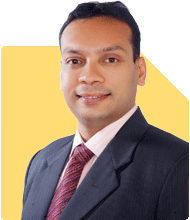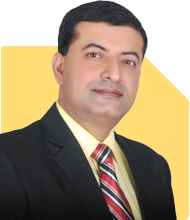Ramalingam Kalirajan |959 Answers |Ask -Follow
Mutual Funds, Financial Planning Expert - Answered on Apr 12, 2024
He has an MBA in finance from the University of Madras and is a certified financial planner.
He is the director and chief financial planner at Holistic Investment, a Chennai-based firm that offers financial planning and wealth management advice.... more

I am 50 working professional. Below is my MF portfolio . 1. Parag Parikh Flexi Cap Fund 2.6 lakhs + 10K SIP 2. PGIM India Midcap Opportunities Fund 1.85 L Value + 5K SIP 3. Quant ELSS Tax Saver Fund 80K 4. Axis Small Cap Fund 1.85 Lakhs Value + 5K SIP 5. Axis Gold Fund 75K Value + 5K SIP 6. Canara Robeco Bluechip Equity Fund 70K 7. Quant Multi Asset Fund 50K 8. SBI Magnum Income Fund 50K 9. ICICI Prudential Equity & Debt Fund 50K 10. Quant Active Fund 50K 11. ICICI Prudential Bluechip Fund 25K I want to build a retirement corpus of 2 crore in 10 years. I am planning to invest around 50K every month. Plus i have. surplus of 4Lakks which i want to invest in few of the MFs above. Planning to exit Canara Robeco bluechip and Axis Small cap soon. Please suggest if any changes you want me to do.
Increase SIP Contributions: Consider increasing your SIP amounts in high-performing funds like Parag Parikh Flexi Cap and PGIM India Midcap Opportunities Fund, which have shown good potential for long-term growth.
Review and Consolidate: Evaluate the performance of all your funds and consider consolidating your portfolio to fewer, well-performing funds to simplify management and potentially enhance returns.
Focus on Quality: Prioritize funds with strong track records, consistent performance, and experienced fund management teams. Consider adding large-cap and diversified equity funds for stability and balanced growth.
Asset Allocation: Ensure a balanced asset allocation across equity, debt, and gold funds based on your risk tolerance and investment horizon. Reallocate surplus funds strategically to maintain a diversified portfolio.
Regular Review: Monitor your portfolio regularly and make adjustments as needed based on changes in market conditions, fund performance, and your financial goals.
Consider consulting with a financial advisor for personalized advice tailored to your specific circumstances and goals.
You may like to see similar questions and answers below
Omkeshwar Singh | Answer |Ask -Follow
Head, Rank MF - Answered on Sep 08, 2021
Ulhas Joshi |255 Answers |Ask -Follow
Mutual Fund Expert - Answered on Mar 15, 2023
Hardik Parikh |106 Answers |Ask -Follow
Tax, Mutual Fund Expert - Answered on Apr 20, 2023
Sanjeev Govila |458 Answers |Ask -Follow
Financial Planner - Answered on Jun 15, 2023
Sunil Lala |178 Answers |Ask -Follow
Financial Planner - Answered on Apr 29, 2024
Sunil Lala |178 Answers |Ask -Follow
Financial Planner - Answered on Apr 29, 2024
Sunil Lala |178 Answers |Ask -Follow
Financial Planner - Answered on Apr 29, 2024
Sunil Lala |178 Answers |Ask -Follow
Financial Planner - Answered on Apr 29, 2024
Sunil Lala |178 Answers |Ask -Follow
Financial Planner - Answered on Apr 29, 2024
Krishna Kumar |256 Answers |Ask -Follow
Workplace Expert - Answered on Apr 29, 2024
Krishna Kumar |256 Answers |Ask -Follow
Workplace Expert - Answered on Apr 29, 2024
Shekhar Kumar |107 Answers |Ask -Follow
Leadership, HR Expert - Answered on Apr 29, 2024
Ramalingam Kalirajan |959 Answers |Ask -Follow
Mutual Funds, Financial Planning Expert - Answered on Apr 29, 2024
Ramalingam Kalirajan |959 Answers |Ask -Follow
Mutual Funds, Financial Planning Expert - Answered on Apr 29, 2024





























